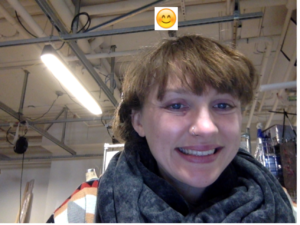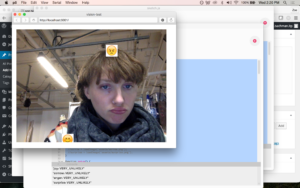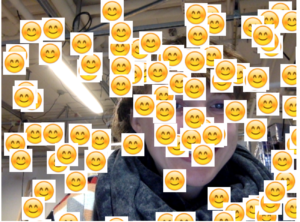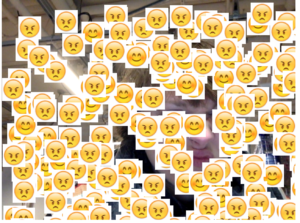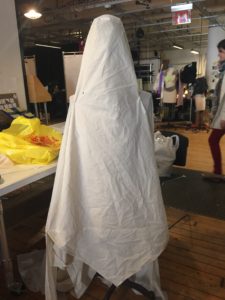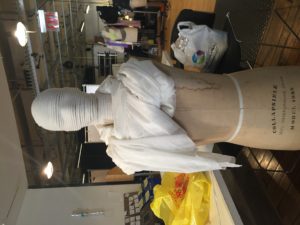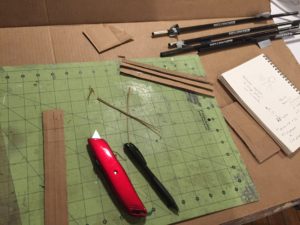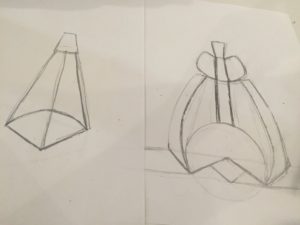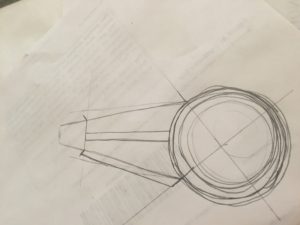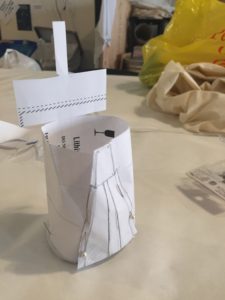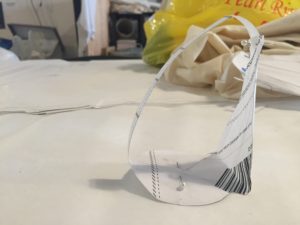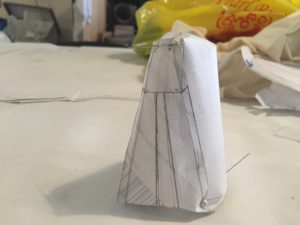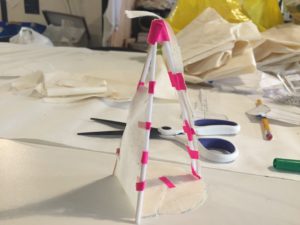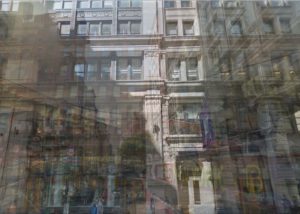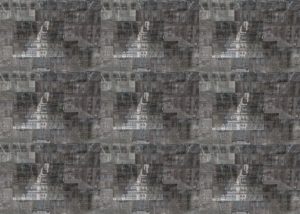HSF: Assignment 1
Research inspiring storyteller or project and prepare a blog post and presentation for next class on how they’ve changed or influenced storytelling or their field.
When thinking back on storytellers and projects that had a profound influence on my person, I kept returning to media I encountered during my childhood. One game still stands out to me for its unique game play experience that felt progressive even for the 90s.
The game was Secret Paths in the Forest, created by the now defunct software company Purple Moon.
 In the game (what we might call today a Visual Novel), you follow the stories of several adolescent girls and help them make life choices.
In the game (what we might call today a Visual Novel), you follow the stories of several adolescent girls and help them make life choices.
I was about 8 when I started playing Secret Paths and I distinctly remember really enjoying them, feeling so immersed that I could spend hours on the computer but feel like I’d just been on a hike with my closest friends. It was the first time I’d interacted with a computer program that felt relatable and enjoyable, much in the same ways that at the same age Babysitter Book Club books felt – but this time, I got to take part in the story.
When I started researching the series, what I found was mostly about the software creator Brenda Laurel. Laurel has worked in human computer interaction design since 1976, is a proponent for diversity and inclusiveness in tech and considered the foremost theorist on game development for girls. She’s currently Chair of the CCA Graduate Program in Design.
In the 1990s, Laurel noticed that the technology industry, specifically computer gaming, was primarily created for men by men. Girls, however, weren’t considered in game development. It was just assumed that they weren’t interested. Laurel and others looked at this from another way – what if we aren’t making things that they would find interesting? Laurel and others saw this as a problem – in the 90s, games were a way to get kids engaged with technology. Were girls missing out?
The release of a Barbie fashion game showed that girls were interested in computers games (and these games could be lucrative). But in many ways the Barbie game was just another example of taking something that was already known to be appealing to many girls and re-packaging.
What Laurel was interested in was developing specific interactions based off of solid ethnographic research into what girls like. For Laurel, it wasn’t simply about designing a new kind of product but doing “culture work” – actively working to change the narratives surrounding girls and games. She did a combination of qualitative and quantitative research to find out exactly what girls (ages 8-14) liked and what they would want out of a computer game. Using this research they created the software company Purple Moon and launched the first of the Secret Paths and Rockett games in 1997.
 Turns out that Laurel’s work was seen as fairly controversial. I remember enjoying these games, possibly because I was Laurel’s “ideal” user – 8 years old, white middle class, new-ish to computers. But there’ve been many critiques of the Purple Moon games and Laurel’s research. By looking for patterns and trends within a female demographic and some of her published comments on girls and games (in particular, this TEDtalk from 1998), Laurel doesn’t have the most diverse understanding of what the young female experience is like. Some have directly accused her of creating a monolithic identity for girls, promoting traditional gender stereotypes based around appearance and socializing while estranging those who might be interested in exploring other experiences. In reading some more contemporary criticism in Kotaku and Jezebel, both authors question why twenty years later we’re still debating the relationship between femininity and video games and technology in general (hello, GamerGate). Debates around gendered products of course aren’t limited to technology. So I found this quote from the Kotaku article the most pertinent:
Turns out that Laurel’s work was seen as fairly controversial. I remember enjoying these games, possibly because I was Laurel’s “ideal” user – 8 years old, white middle class, new-ish to computers. But there’ve been many critiques of the Purple Moon games and Laurel’s research. By looking for patterns and trends within a female demographic and some of her published comments on girls and games (in particular, this TEDtalk from 1998), Laurel doesn’t have the most diverse understanding of what the young female experience is like. Some have directly accused her of creating a monolithic identity for girls, promoting traditional gender stereotypes based around appearance and socializing while estranging those who might be interested in exploring other experiences. In reading some more contemporary criticism in Kotaku and Jezebel, both authors question why twenty years later we’re still debating the relationship between femininity and video games and technology in general (hello, GamerGate). Debates around gendered products of course aren’t limited to technology. So I found this quote from the Kotaku article the most pertinent:
“Perhaps it should have never been a matter of designing games that focus on a specific gender. Perhaps what was really needed was cognizance and accountability of what elements of a game may speak to gendered aspects we are socialized for, and to make sure the games the industry produces include something ‘for’ both genders.”
Despite the faults of the games and some skewed ideas on gender, Laurel and Purple Moon helped shift the conversation about the relationship between girls and technology. As one Wired article wrote, Computer games for girls is no longer an oxymoron. Laurel was one of the first people to voice that girls had a right to enjoy games and a right to see themselves and their experiences, desires, and fantasies represented as well.
Social Hacking: Assignment 6
My initial idea for this assignment was to look at absence and presence in private space using a thermal camera. Unfortunately, I ended up having to wait for someone to bring in the thermal camera so I scrapped that idea.
Another thing I’d been thinking about was reaction videos. I’m fascinated by the amount of reaction videos on YouTube and the performance of emotion. The intense interest on other’s part in reaction videos I think shows a human need to connect with others and validate one’s emotional responses. Like watching a movie in the theater, sharing an intense reaction with a person, even if it’s via watching them on a screen, connects us to each other regardless of age, gender, culture, geographic location.
This being my first time working with computer vision, I decided to pare down my concept to its basics and see how far I could get in writing/executing the code. I found out that Niccola was also looking at emotion analysis with the Google Vision API, so we teamed up and went about creating our own interpretations of how to execute actions based on the presentation of certain feelings.
In a weird chain of ideas – involving sentiment analysis, Walmart employees and affect theory – I wrote a program that would cover the screen in emojis based on the emotion present. . I wanted hundreds of emojis to cover the persons’ face as a way of symbolizing how technology over simplifies our feelings and reactions.
The code worked well when it was only a couple of emojis on the screen, but as soon as they covered the entire canvas it seemed to screw with the sentiment analysis and pipe in the emoji faces as the thing to be analyzed instead of the facial reactions.
Here’s the code with 2 emojis:
And the code I attempted with 4 (Google Vision allows you to analyze four sentiments – anger, sadness, joy, surprise):
Some screenshots to give an idea:
Wearables: Structure Update
After building out the full-size prototype last week, I drew up a new design that simplified the expansion process. Rather than have four separate panels, there is one front panel and a cape-like back/side panel. Instead of four separate triangles to create the floor, there would be one triangle-ish piece in the front that pieces in to a circular floor, like a piece of a pie. Also, there would be one giant back pole that arches over the wearer for a total of three tent pole structures instead of four. I took the front panel from the last prototype and then pinned it to a larger piece of fabric to look at draping.
I cut up small pieces of cardboard to try out different sizes for the poles, trying to keep a balance between having smaller pieces but not having too many pieces. Still need the structure to be easy to set up. After doing the calculations and testing different sizes, I’ve settled on having six 8″ poles, with 1″ connectors.
I also made small paper models to get a sense of the new and different shapes, considering how I could break up the different sections to give the piece flexibility in some areas and sturdiness in others. The piece will ultimately use three different fabrics on the exterior – a stretchy fabric that will be the majority of the back panel and a center panel in the front, a regular medium weight cotton for the front and head covering, and a nylon for the floor pieces and back “spinal” column.
Working with the paper was extremely difficult, especially because we were low on tape on the floor. But mostly I realized that I struggle A LOT with transforming 2D concepts and visuals into 3D objects. Perhaps this is why I’ve never been much of a sculptor or fabricator in the past. There’s something about the abstraction/transformation/shapes/angles/measurements that makes my mind spin. So I made several different paper pieces, realizing over time how long I had to make certain sides, how to curve certain parts rather than leave them straight, etc.
Once I got a decent idea of pattern, I used it to create small model out of muslin. Found some perfectly sized tiny acrylic pieces for use as tiny poles.
I’m still struggling with the shape/size of the back/side panels. But my next step is to scale up the pattern and using draping to figure out what the shape should be.
Wearables: Exterior Update
So, my fabric that I ordered (grey, tech-ish, camo) isn’t getting here until Tuesday.
But as I thought more about my project, I realized that there’s something about using military grade camo that makes me…uncomfortable. It’s a reference that isn’t right for this piece. So I had the idea that of creating a composite image from different google street view screenshots – going for the grey still but getting that color from the layering of images.
Here’s one example:
So, what I’d like to do is get a fabric printed with images like this one. The trick now is to figure out the scaling – are these images tiny and tiled? Or are they bigger and more recognizable? Are there multiple (yes, probably)?
I found a couple a print your own fabric stores, online and in New York. First2Print does it in 10-15 days.
Edit: Here’s a pattern I made out of six different composites, each composite uses four Google Street View photos:
Wearables: Simplifying
As I struggled with my construction, I realized that I’ve been trying to do too many things with this project. There are so many ideas an experiences that I want to address – but unfortunately, one garment is not capable of that (at least, not yet).
I took all my materials home. I think part of me has felt distracted and overwhelmed by being on the floor at the moment – thesis, finals. There are high levels of stress and anxiety, including within my own body.
As I draped the fabric over me again, the fleece, the black out cloth, I returned to one of my earliest feelings. The idea of overstimulation.
I think the need for space, for personal space, comes from being overwhelmed – by people, by the urban environment, by our own feelings. I think this was the feeling I was trying to address the most. How to create a quiet world for one’s self.
And I can see how my other thoughts tie into this – a need for privacy, to be left alone, a quiet place to collect one’s thoughts and emotions. Where one feels safe and secure. I think that’s why I kept thinking of it as a personal fort – because as a child, forts were a place that I constructed to escape. To hide.
…now, where I’m still struggling is the exterior experience. Going in this direction, I’m trying to think of visual and architectural references that say, keep away, don’t disturb. Porcupine spikes? A snail shell? I’m not interested in true camouflage – I think that even when we try and hide we leave some kind of mark, that we don’t want to truly disappear. It’s more that we want to be left alone. I’m still attached to this “personal space suit” idea, that space suits are themselves a small spacecraft, a habitable space and technology that allows a person to exist in hostile environments. (would making the architectural form look more like a space shuttle be too on the nose?)
(Stefani mentioned that Mary Mattingly did a wearable portable architecture project to talk about survivalism. Does make me wonder if the design should have more than two stages.)
Wearables: Exterior
What I seem to be struggling the most with is what the exterior of my garment will be like.
My original plan was to have this highly reflective surface, that doesn’t allow people in, that if they were to confront the viewer they would have their reflection turned on them.
Unfortunately, it’s hard to get both a flexible and quality reflection. I’ve played around with mylar, and recently bought some mirrored sequin fabric.
When I talk to other people about this project, it’s the exterior that’s most contentious. Most understand the interior aspects (thought I have gotten feedback in terms of breathability), but the concept associated with the exterior is not working.
Despina suggested going the more traditional camouflage route – because, highly reflective surfaces work as a sort of camouflage. So perhaps taking photos and getting fabric printed. Unfortunately, LaGuardia studios does not do fabric printing and most places deliver in four weeks. I also recently spoke with Tommy about Dazzle forms of camouflage, the use of strong geometric shapes to obscure position and distance.

(It seems that no matter what direction I go in, Adam Harvey has already been there.)
The combination of these later ideas made me think of Arden Bendler Browning’s urban landscape paintings on Tyvec…but, more aesthetic rather than to a purpose, perhaps.

ADDENDUM: Looking at the images above, its interesting to see how Dazzle takes a lot of inspiration from Modernist art aesthetics. What if this exterior referenced contemporary visuals, such as glitch? Glitch as something that’s so corrupted that it renders a file unreadable, inaccessible. Could a glitchified exterior make the wearer read as inaccessible as well?

Wearables: LaGuardia Studio Meeting // structure
Last week I had a consultation with the folks at NYU’s LaGuardia studio. I was interested in learning about 3D printing parts and whether they could print on fabric. Printing on fabric was a no (more in another post), but I did talk with two people about various options for the mechanics of my tent. They had a plethora of suggestions, some helpful but some mostly fantastical. I looked into the possibilities of creating my own carbon fiber molds and 3D printing joints.
While I now have exposure to some new resources, in the end I ordered a couple of tent poles after playing with ones that I borrowed. My thought is to cut them down to smaller size and order more joining pieces. They will living in a pocket in the interior and stick out through grommets on the bottom.
